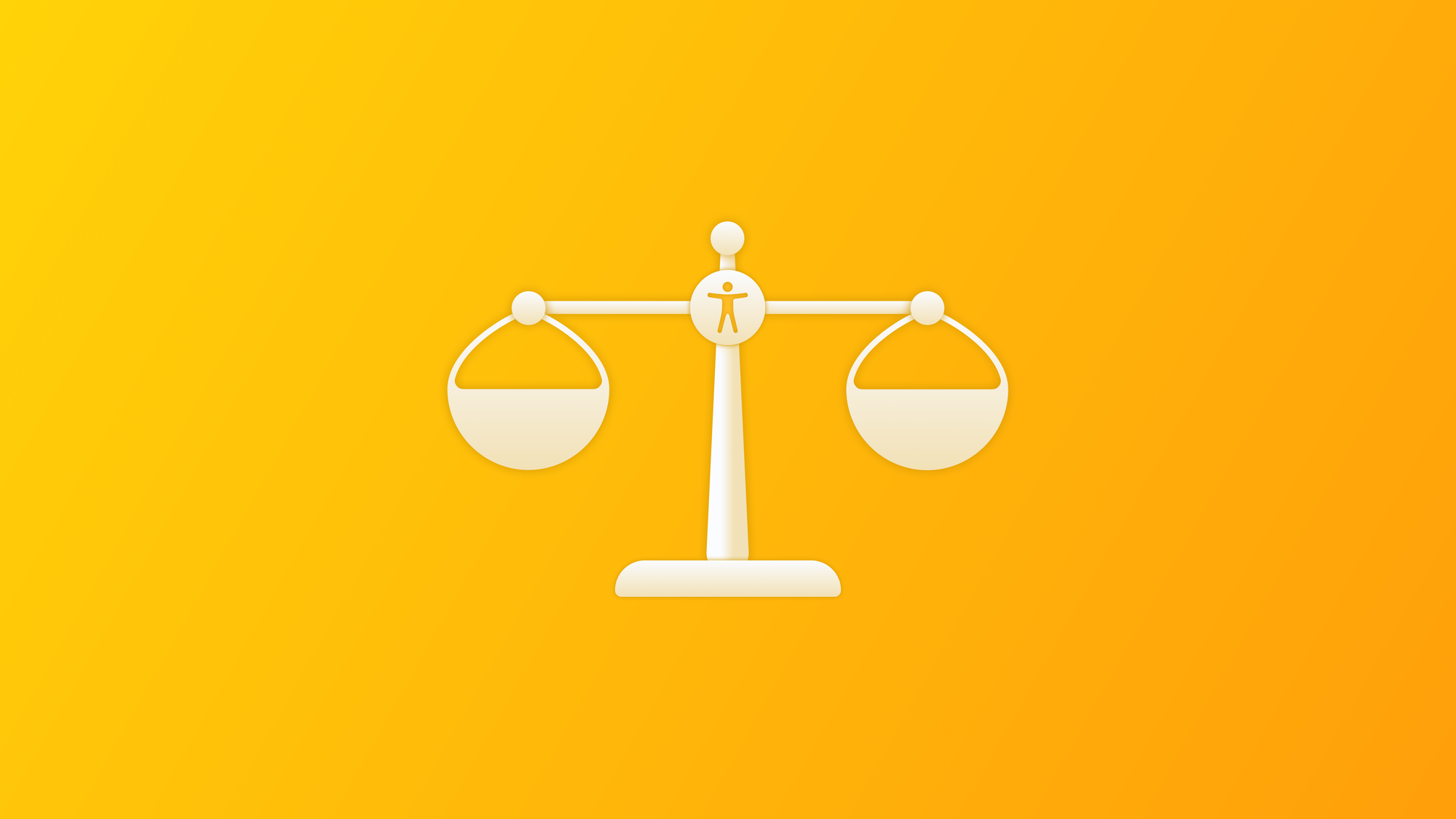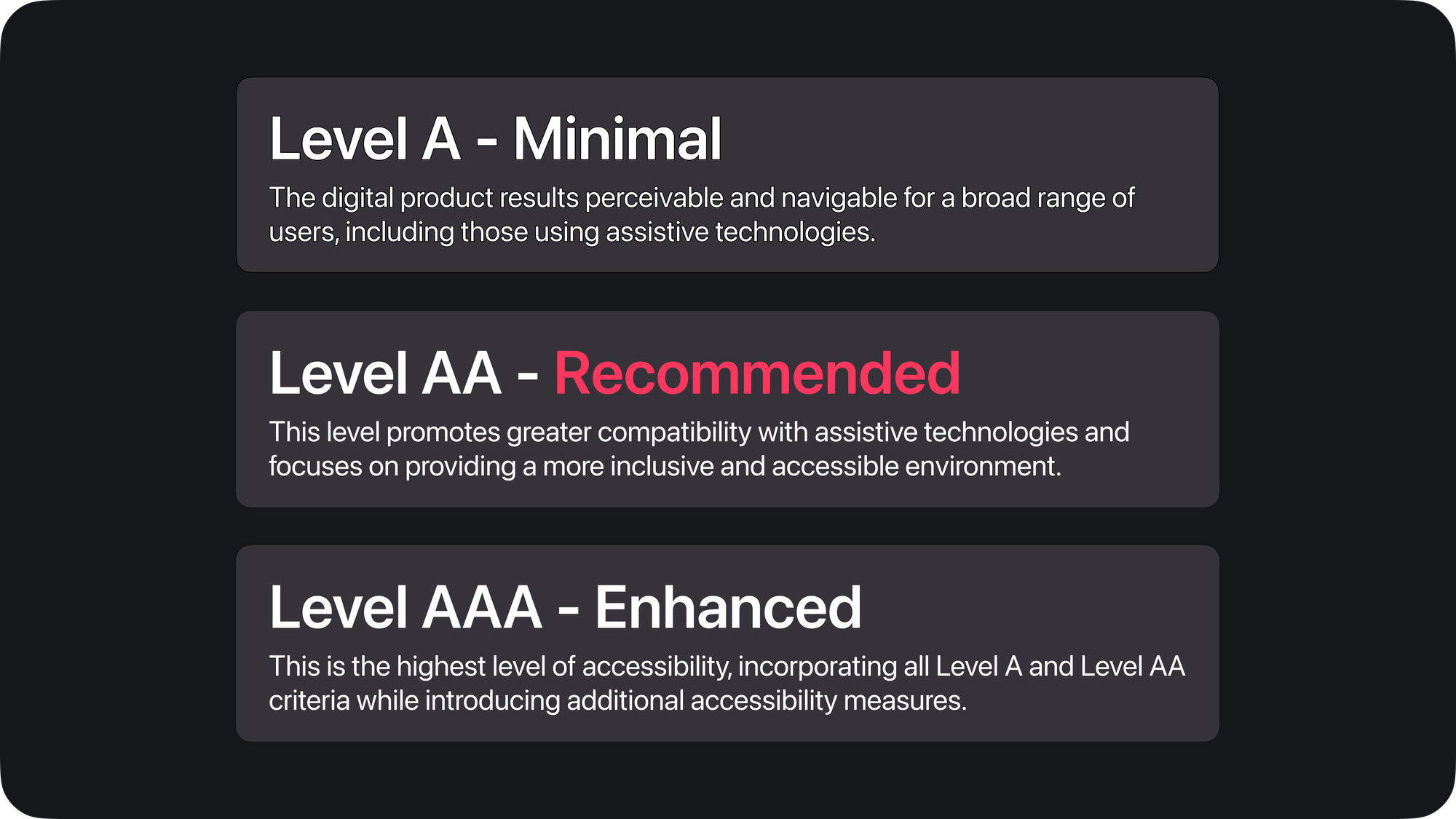
Exploring accessibility regulations and guidelines
Explore the world of accessibility laws, regulations, guidelines, legal aspects, and the profound impact they have on shaping a more inclusive technological future.
In the ever-evolving landscape of technology, accessibility stands as a cornerstone, ensuring that innovation is not only groundbreaking but also inclusive. The global impact of accessibility resonates far beyond compliance; it is a testament to the transformative power of technology when it embraces diversity. Apple is at the forefront of this movement, a pioneer in creating products that seamlessly integrate accessibility features, affirming its commitment to inclusivity.
The journey from passionate developers and designers championing the cause to comprehensive regulatory frameworks signifies a monumental shift in how society perceives and values inclusivity in the digital world.
In this article we will explore the multifaceted world of accessibility regulations, and guidelines, understanding the profound impact they have on shaping a more inclusive technological future.
Change of perspective
The way developers, designers, and organizations approach the creation of digital experiences has undergone a significant change due to the evolution of digital accessibility.
For a long time, accessibility was perceived as an optional feature or a posthumous fix, only implemented when explicitly needed. However, this perspective has shifted over time, and accessibility has become an element of the development and design process where enthusiasts and visionaries laid the foundation for its advocacy. These passionate developers and designers championed the cause, recognizing the importance of making technology for everyone, regardless of their abilities.
This cultural adjustment has become more evident as companies and large organizations have started to prioritize accessibility by introducing it early in the product life cycle rather than treating it as an afterthought. Apple's journey for example reflects this ethos, showcasing a trajectory from grassroots efforts to a formalized commitment.
Looking at this event from an analytical point of view, it is evident that the rates of implementation of accessibility features are steadily increasing, also quantitatively demonstrating that the industry is embracing the challenge of creating products that are inclusive by nature thereby improving the standards of the product first and the development process second.
In this context, accessibility is not just regulatory compliance, but a strategy that brings tangible benefits in terms of customer satisfaction, corporate reputation, and innovation.
Emergence of standards and regulation
Digital services have become integral to our daily lives, ensuring equal access to these platforms is not just a matter of convenience but a fundamental human right.
According to the World Health Organization, approximately 16% of the global population comprises individuals with disabilities, a staggering figure that emphasizes the necessity for comprehensive accessibility laws, regulatory frameworks, and guidelines.

Europe alone sees 87 million people facing some form of disability, equating to 1 in 4 adults, according to the European Council.
The COVID-19 pandemic underscored the vital role of digital inclusivity, emphasizing that crucial services now predominantly occur online. Whether it's accessing public information, shopping, health consultations, banking, or online communications, these services must be accessible to as many people as possible. Such inclusivity not only fosters a more accepting and compassionate world but also empowers all individuals to fully participate in society and live independently.
The growing acknowledgement of digital accessibility's significance has led to the adoption of targeted regulations and/or guidelines. Governments have decided to follow them to ensure an equitable and inclusive digital environment.
International accessibility guidelines
Through the analysis of accessibility regulations globally, it becomes apparent that despite their shared common goal of fostering inclusivity, each jurisdiction brings its unique perspective and priorities. Analogies can be drawn between these laws, highlighting their shared emphasis on providing equal access to digital resources. However, differences in approach reflect the diverse cultural, legal, and technological landscapes they aim to address.
In the pursuit of global inclusivity, international accessibility guidelines play a fundamental role. Most digital accessibility regulations and laws are closely linked to the Web Content Accessibility Guidelines (WCAG) developed by the World Wide Web Consortium (W3C), which provide a detailed and widely accepted framework for ensuring the accessibility of web and digital content.
Apple's alignment with these international standards is evident in the seamless integration of accessibility features across its product line. Whether it's VoiceOver for the visually impaired or Dynamic Type for those with varying reading abilities, Apple products embody a commitment to creating experiences that adhere to accessibility standards.
Before diving into the legislative dynamics of governmental organizations and states, it is essential to remember that the WCAG has three levels of digital product conformity: A, AA, and AAA. These levels determine how compliant a digital product is with the set standards for digital accessibility, with A being the lowest and AAA the highest level of compliance.

Regulations worldwide
It is important to analyze the regulatory frameworks established by various countries worldwide to promote digital accessibility. These frameworks include laws, regulations, policies, and standards that aim to ensure that digital content, services, and products are accessible.
USA
In the USA, regulations guarantee equal opportunities for people with disabilities. One of these regulations is the Americans with Disabilities Act (ADA) which is a law that prohibits discrimination against people with disabilities in all areas of public life, including education, employment, and transportation was passed by the American Congress in 1990 and amended in 2008. This law ensures that all forms of electronic and informational technology are accessible to people with disabilities.
Canada
The Canadian Human Rights Act has been in place since 1985 to prevent discrimination against protected groups by federally regulated organizations. Recent regulations have further strengthened these initiatives by requiring both public and private organizations to actively remove barriers to accessibility and one of them is the Accessible Canada Act (ACA).
Also, the Government of Canada is committed to ensuring that a high level of Web accessibility is applied uniformly across its websites and Web applications. To uniform this level, the Canadian Standard on Web Accessibility was introduced.
United Kingdom
In the UK, the Equality Act of 2010 prohibits discrimination against people with disabilities in the provision of goods, facilities, and services, including websites. Service providers are required to anticipate the needs of potential disabled customers and make reasonable adjustments to their sites to make them accessible.
The Public Sector Bodies (Websites and Mobile Applications) (No. 2) Accessibility Regulations 2018 requires public sector bodies to comply with the WCAG 2.1 AA international accessibility standard and publish an accessibility statement.
Japan
The Japanese government has been a pioneer in seeking international standards for accessibility and technologies. As early as 1999, the Japanese Ministry of Posts and Telecommunications stated Internet accessibility guidelines.
Japan lacked a specific disability rights law equivalent to the ADA until 2013. In fact, in 2014, passed the Elimination of Discrimination against Persons with Disabilities Act which prohibits disability-based discrimination. Japan’s most specific web accessibility regulation is the Japanese Industrial Standards (JIS) X 8341-3, which provides guidance for both public and private sector organizations.
Europe
In Europe, the EN 301 549 standard adopts the latest version of the W3C’s WCAGs. It supports the European Directive 2016/2102 directive on the accessibility of the websites and mobile applications of the public sector and can be used to demonstrate compliance with this directive.
The standard is also expected to be updated to support the European Directive 2019/882, also known as the European Accessibility Act, which defines accessibility requirements for services and products.
By harmonizing accessibility standards and requirements across member states, the directive aims to create a more seamless and consistent marketplace for accessible products and services within the EU. This removal of country-specific rules helps to promote a level playing field for businesses operating across different EU countries, reducing barriers and facilitating smoother trade in the field of accessibility.
Compliance
The EAA was adopted by the European Union in June 2019 and needed to be transposed into national law by member states by June 2022. Companies have until June 28, 2025, to comply with the EAA, but the implementation of the act is complex, and preparations must begin immediately. The three-year period was carefully selected to account for the expected challenges in ensuring compliance, similar to GDPR's adoption, which provided companies with only two years to prepare.
As a matter of fact, EAA covers many products and services, including computers and operating systems, smartphones and other communication devices, TV equipment related to digital television services, ATMs and payment terminals, e-readers, and ticketing and check-in machines. In addition, it also covers services such as e-commerce, banking, and transportation.
EU Member States have the power and freedom to determine the appropriate penalties for non-compliance. These sanctions must be effective, proportionate and dissuasive. Although the specific details of the fines have not yet been released.
A way to ensure compliance
Ensuring compliance with legislative adaptations requires solid action on the part of companies and with it a methodical approach that prioritizes the necessary interventions to ensure accessibility.
Here are some essential steps to achieve this goal:
- Audits and User Testing
Conducting accessibility audits of your digital products and services is an essential step. It enables you to identify any potential accessibility issues in your product. Additionally, usability tests with users who face specific accessibility challenges are highly effective. Both evaluations provide valuable feedback, which can help you identify the barriers that need to be removed to improve the overall accessibility of your product. - Employee training
To ensure that accessibility is fully integrated into the product development and maintenance process, it's crucial to train employees. By providing them with information on best practices, accessibility principles, and available technologies, companies can make the necessary adjustments to comply with laws without facing too much difficulty. - Maintenance
It is fundamental to maintain meticulous records of your accessibility-related efforts, which should include the outcomes of the assessment, training, enhancements, and ongoing monitoring. Such documentation will demonstrate your unwavering commitment to compliance, especially if the need arises in the future.

Generally speaking, as accessibility is a continuous process, it is essential to monitor your products and services regularly to ensure compliance and make necessary updates as technologies or standards evolve.
Conclusion
The path toward a more accessible and inclusive future is undeniably challenging, yet it stands as a testament to collaboration, innovation, and the collective belief in technology's power to dismantle barriers. Recognizing accessibility as a fundamental human right, the journey is now guided by evolving guidelines and standards that emphasize the urgent need for action.
Apple's unwavering commitment to this cause is evident. Its products and policies reflect a broader industry-wide realization that accessibility is not just a checkbox to tick but a path to embrace. Companies must integrate accessibility into their core strategies, as this proactive approach not only aligns with legal obligations but also fosters a more inclusive and accessible landscape.
As developers, it is our responsibility to have a deep understanding of the guidelines, standards, best practices, and accessibility principles. By ensuring that accessibility requirements are met, not only can we enhance corporate practices and requirements, but we can also improve the overall experience for users and customers. This is a shared responsibility that leads to mutual benefits.
The time to act is now, paving the way for a future where technology will leave no one behind.


